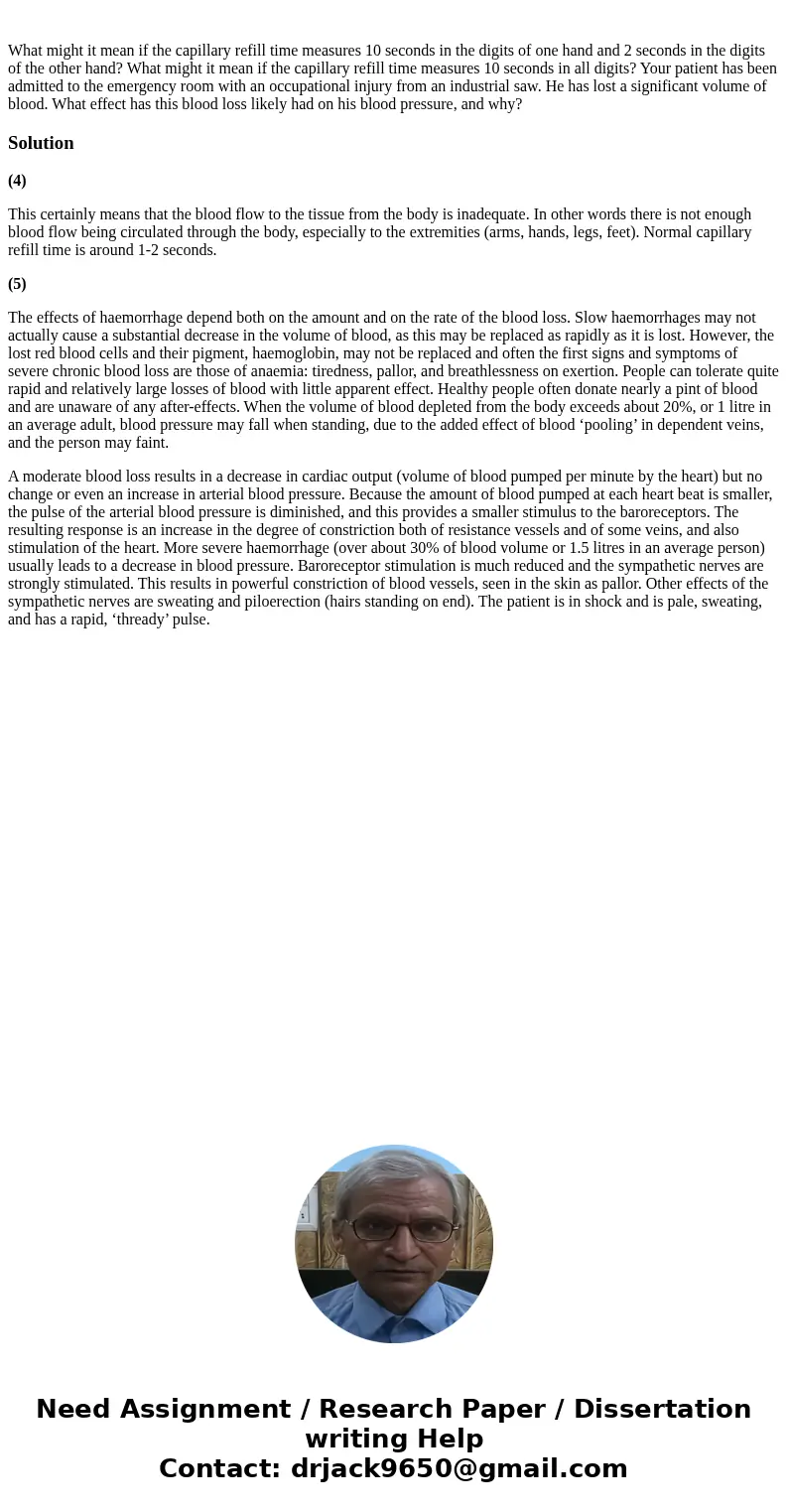What might it mean if the capillary refill time measures 10
Solution
(4)
This certainly means that the blood flow to the tissue from the body is inadequate. In other words there is not enough blood flow being circulated through the body, especially to the extremities (arms, hands, legs, feet). Normal capillary refill time is around 1-2 seconds.
(5)
The effects of haemorrhage depend both on the amount and on the rate of the blood loss. Slow haemorrhages may not actually cause a substantial decrease in the volume of blood, as this may be replaced as rapidly as it is lost. However, the lost red blood cells and their pigment, haemoglobin, may not be replaced and often the first signs and symptoms of severe chronic blood loss are those of anaemia: tiredness, pallor, and breathlessness on exertion. People can tolerate quite rapid and relatively large losses of blood with little apparent effect. Healthy people often donate nearly a pint of blood and are unaware of any after-effects. When the volume of blood depleted from the body exceeds about 20%, or 1 litre in an average adult, blood pressure may fall when standing, due to the added effect of blood ‘pooling’ in dependent veins, and the person may faint.
A moderate blood loss results in a decrease in cardiac output (volume of blood pumped per minute by the heart) but no change or even an increase in arterial blood pressure. Because the amount of blood pumped at each heart beat is smaller, the pulse of the arterial blood pressure is diminished, and this provides a smaller stimulus to the baroreceptors. The resulting response is an increase in the degree of constriction both of resistance vessels and of some veins, and also stimulation of the heart. More severe haemorrhage (over about 30% of blood volume or 1.5 litres in an average person) usually leads to a decrease in blood pressure. Baroreceptor stimulation is much reduced and the sympathetic nerves are strongly stimulated. This results in powerful constriction of blood vessels, seen in the skin as pallor. Other effects of the sympathetic nerves are sweating and piloerection (hairs standing on end). The patient is in shock and is pale, sweating, and has a rapid, ‘thready’ pulse.

 Homework Sourse
Homework Sourse